Quartz is a hard mineral consisting of silicon and oxygen. It’s one of the most common minerals in the Earth’s crust There are several different types of quartz, including amethyst, citrine, milky quartz, rose quartz, or agate. –yes, all of those are essentially quartz, and they’re all beautiful. Let’s have a look at them.
“Plain” quartz

Despite being the 2nd most common mineral in the Earth’s continental crust, the simple quartz is a true wonder of nature. It’s made of tiny oxygen-silicon tetrahedra, which are also the two most common elements in our planet’s crust. With its elegant simplicity, quartz has fascinated both scientists and artists since ancient times.
If you’d want to study quartz at a molecular level, however, it’s a very different problem. Mixing with other chemical elements, quartz forms complex (and variable) crystals — attempting to describe these crystals would require a considerable amount of detail, but that’s beyond the purpose here. You could write books on that subject (and people have), but we can enjoy its beauty without looking at all the details.
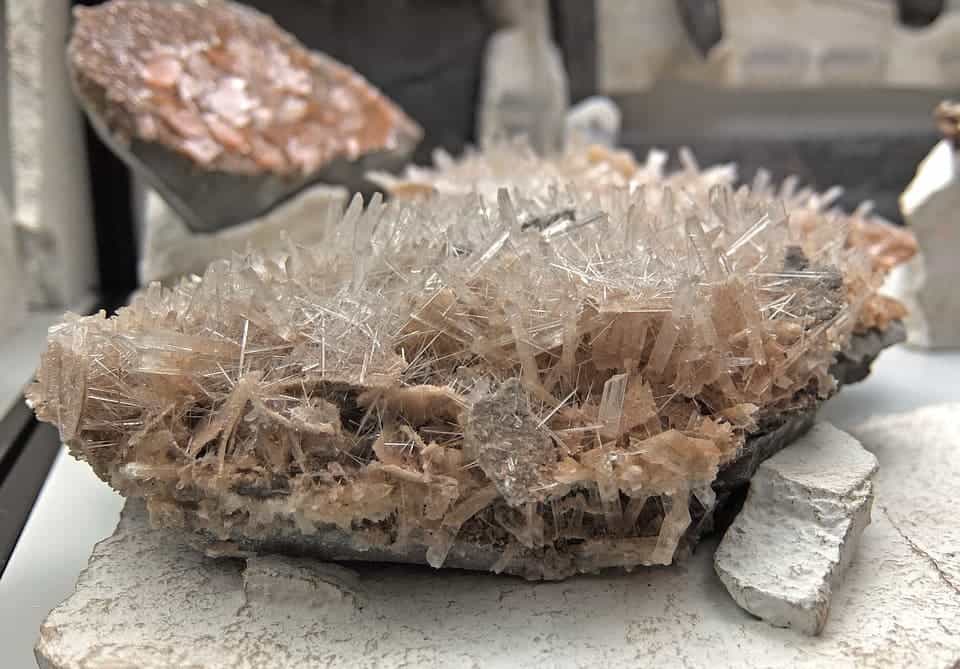
Quartz itself is colorless and transparent (or translucent, to be precise), but it frequently has impurities that make it more colorful. That’s how you can end up with quartz colored in violet, yellow, or even smoky hues. We won’t be focusing on the practical and geological uses of this amazing mineral (quartz is crucial to the computer industry!) and instead, we’ll focus on the aesthetics of its natural varieties.
Amethyst — purple quartz
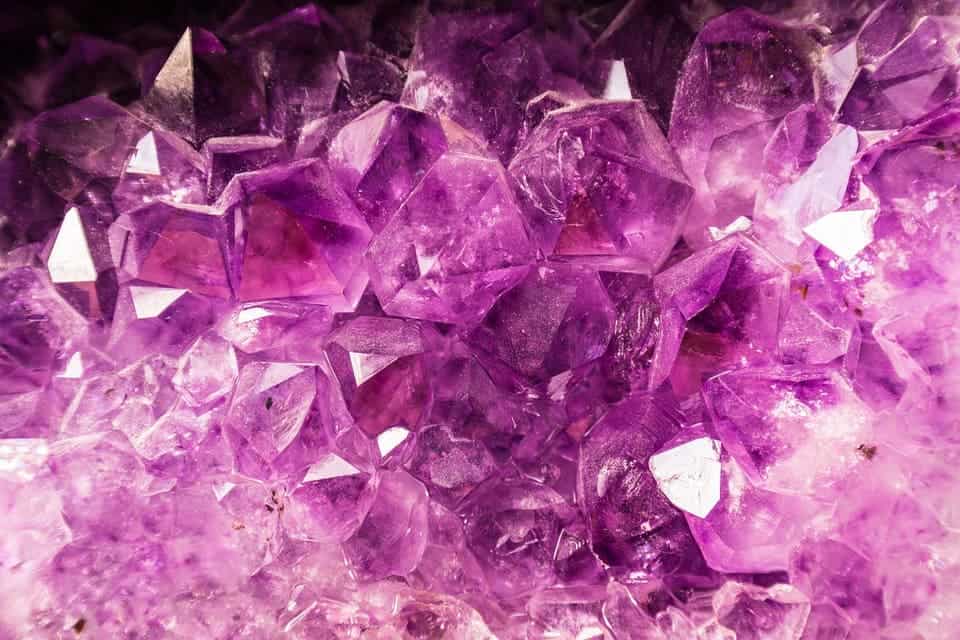
Perhaps the most striking representative of the quartz ‘family’, amethyst has been admired for millennia. There are references to ancient Greeks and Romans believing that it prevented you from becoming intoxicated (they even made drinking vessels with it). In fact, the Greek word “amethystos” may be translated as “not drunken”, from Greek a– (a prefix for ‘not’) and methustos (intoxicated). Ancient Egyptians and Romans also used amethyst as a gemstone.
The color range of amethyst range from soft lavender to a deep purple. Amethyst can fade in tone if overexposed to light, and it can also artificially darkened with adequate irradiation — some sellers use this to make crystals more appealing. Amethyst can also be grown synthetically, and the end result is close to indistinguishable from the real thing. Soe artificial amethysts feature impurities or a lack of clarity, and their color also tends to be uniform — while natural amethyst has variable color
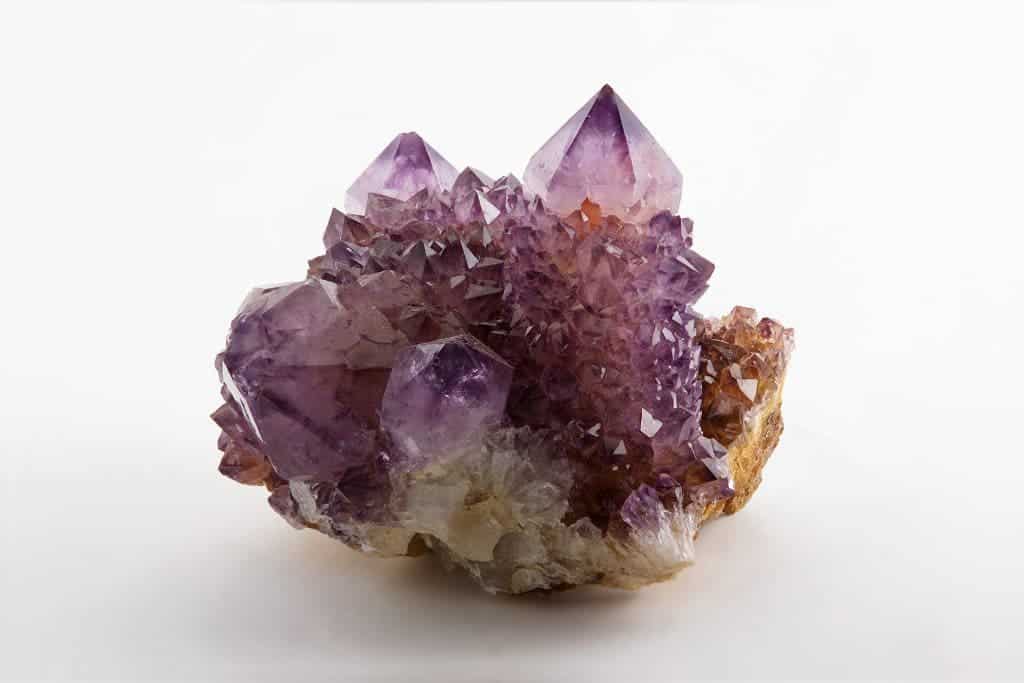
There is still some debate surrounding its exact chemistry and what gives it the distinctive hue. We know that it has the SiO2 composition (as with every quartz variety), but the impurities that give it its violet color are still a topic of discussion. The most likely possibilities are ferric iron or an interplay of iron and aluminum, and even organic material has been found in some crystals.
Up until around 300 years ago, amethyst was held in the highest regard among gemstone enthusiasts, alongside diamonds and rubies. But many large mines have been found ever since, especially in Brazil, South Korea, and Austria. Still, this type of quartz remains a favorite of many, and it’s not hard to understand why.
Citrine – yellow quartz
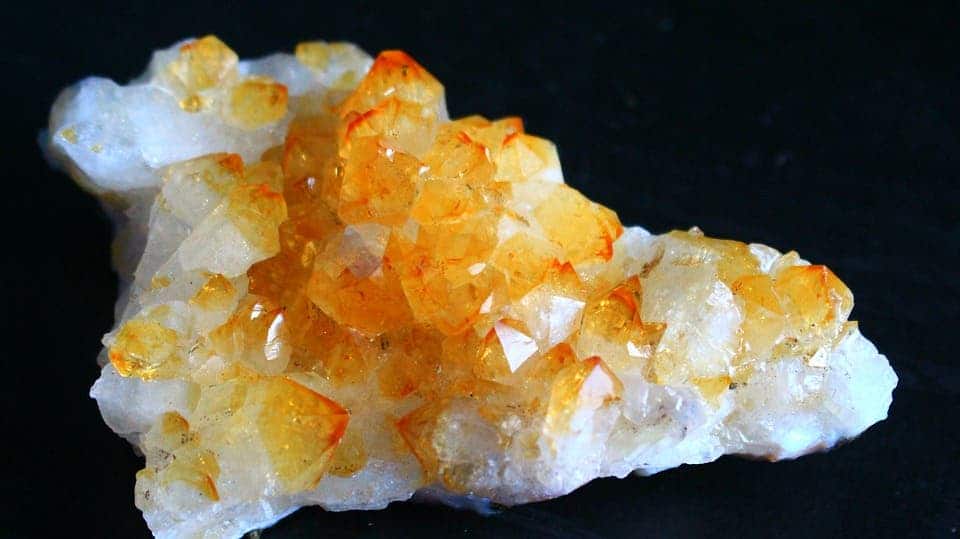
Citrine is the yellow variety of quartz (citrium means lemon in Latin), and can be formed by two different mechanisms: in the ferric variety, iron or iron oxide absorbs radiation (from ultraviolet to blue), and the second mechanism, although the specifics are still unclear, is known to be caused by aluminum, lithium or hydrogen inclusions.
Citrine was also mentioned in Ancient Greece, where it was used as a gemstone, though it was not as sought after as amethyst. In more recent times, it was considered to bring good fortune for merchants, and several superstitions are tied to it. Also like in amethyst, the exact cause for the yellow hue is still debated.
Despite being less popular than amethyst, citrine is actually much rarer. In fact, many sellers heat amethyst at high temperatures until it turns yellow, and they sell it as citrine. It can be hard to tell apart citrine from heated amethyst; the best way to differentiate (though it is not often readily available) is to look at the crystals in polarized light: citrine is dichroic in polarized light (it absorbs different polarizations in different ways) while amethyst is not.
Smoky quartz
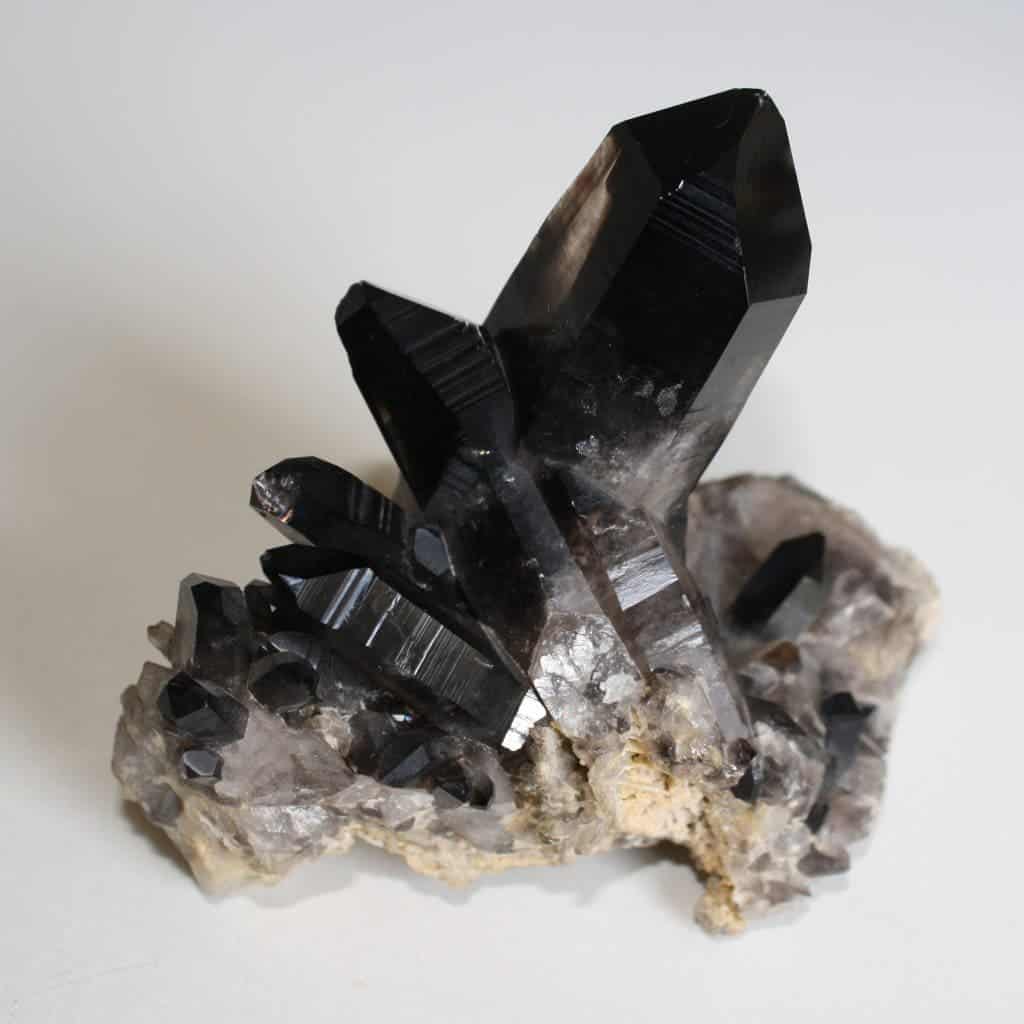
It’s easy to guess why the smoky quartz was given this name; the color ranges from brown to black, giving the vague impression that there’s smoke inside the mineral. It can be obtained either naturally or artificially. It also has two varieties: Morion and Cairngorm.
Smoky quartz is typically found in pockets around igneous rocks. It can range from a light smoky hue to intense, almost brown/black color. However, not all dark quartz is smoky quartz. Like citrine, smoky quartz exhibits dichroism in polarized light.
Rose quartz
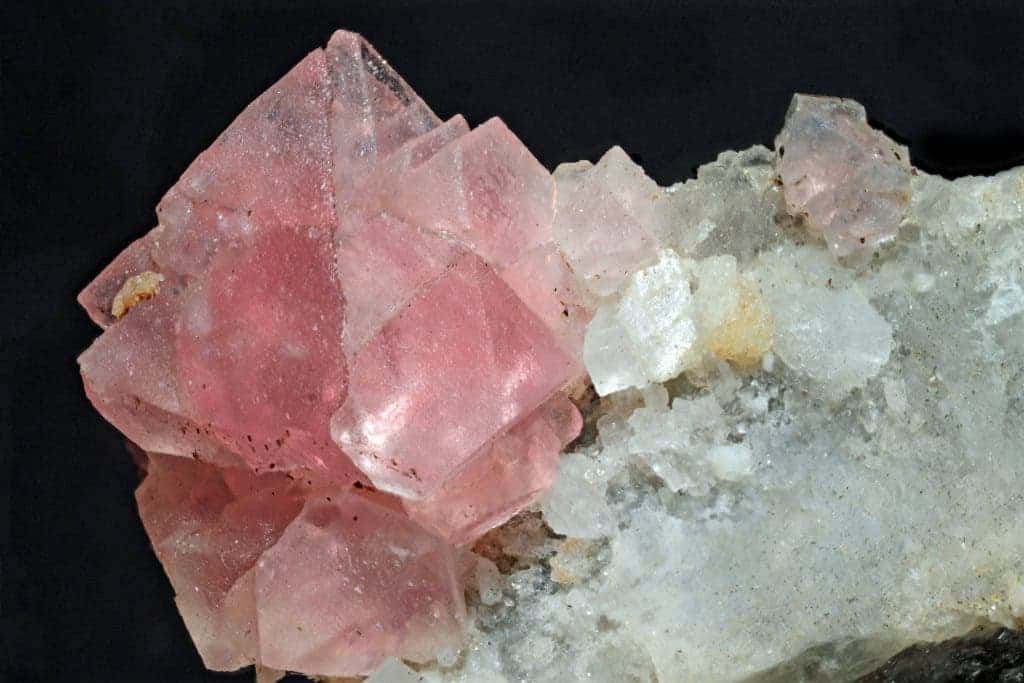
Rose quartz varies in color from light pink to rose red, usually due to titanium or iron (although manganese can also be present). It’s rarely used as a gem because in the vast majority of the cases, it has a lot of impurities; it’s mostly used to carve animals, hearts, etc. However, when clear, it’s quite lovely.
Rose quartz can be hazy, translucent, or anything in between. This is due to microscopic fibrous inclusions of a pink borosilicate mineral. Its pink hue is believed to be caused by aluminum and phosphorous atoms that replace the silicon in the crystalline lattice.
Prasiolite — green quartz
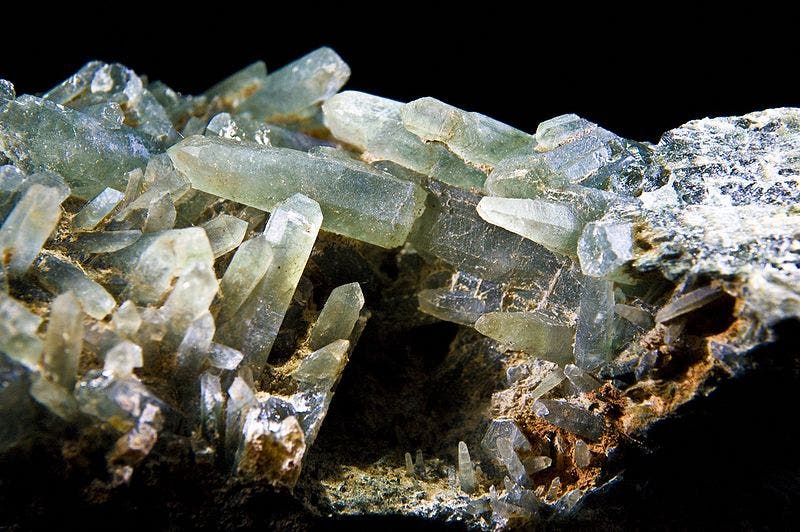
Prasiolite, also called vermarine, is a green variety of quartz. Most “prasiolite” that’s sold nowadays is heated amthyst — but not heated as much that it becomes citrine. Almost all natural prasiolite comes from a small Brazilian mine, though it has also discovered in Poland. It’s probably the rarest type of quartz on this list.
Chalcedony
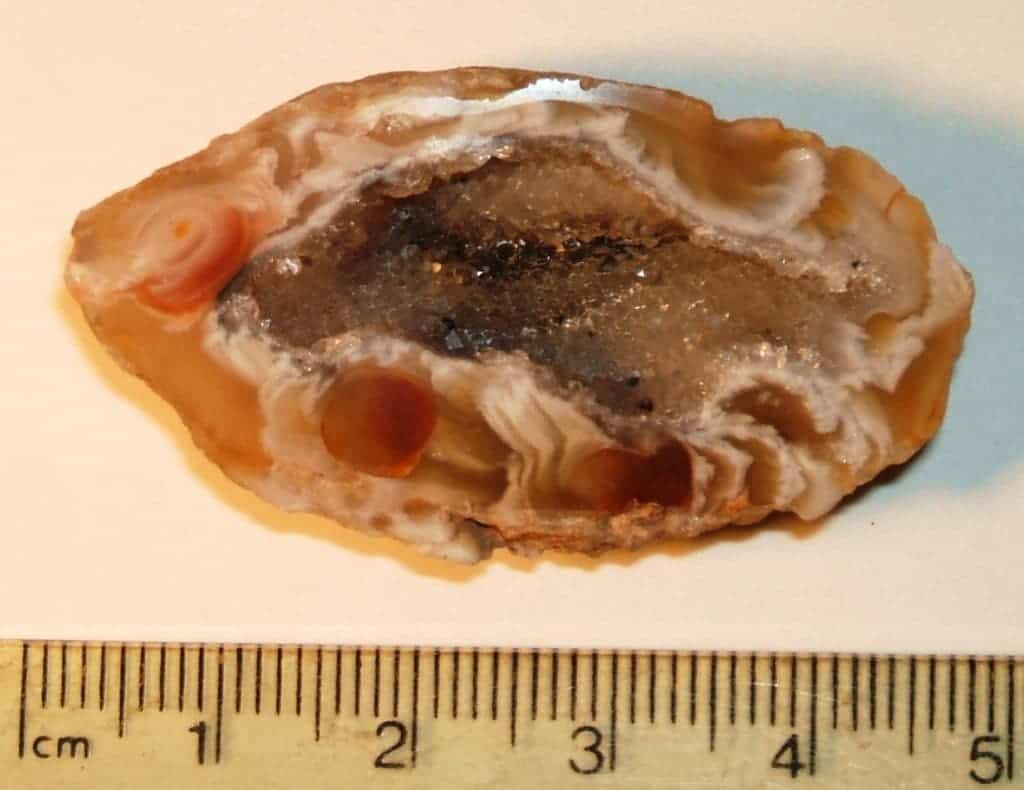
Most varieties of quartz have macroscopic crystals, but chalcedony is different: it’s a so-called cryptocrystalline form, which means that the crystals exist, but they are only visible microscopically. This is generally referred to as microcrystalline quartz in geology.
Because chalcedony has numerous varieties, gem dealers refer to each one by its name. If you plan on getting one, be careful, however: numerous sellers just dye the rock, and it can be difficult to tell by the inexperienced eye because it can have a wide range of colors. Chalcedony also frequently pseudomorphs after organic materials, resulting in petrified wood (in Arizona, a whole forest has been petrified in this way), coral, etc. Types of chalcedony:
Agate
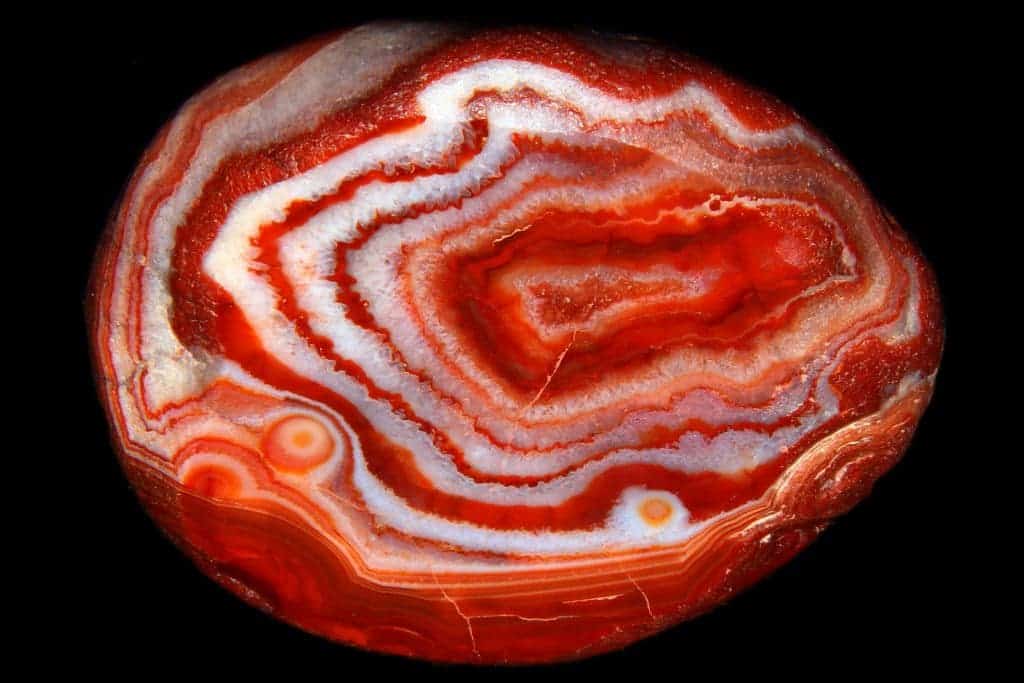
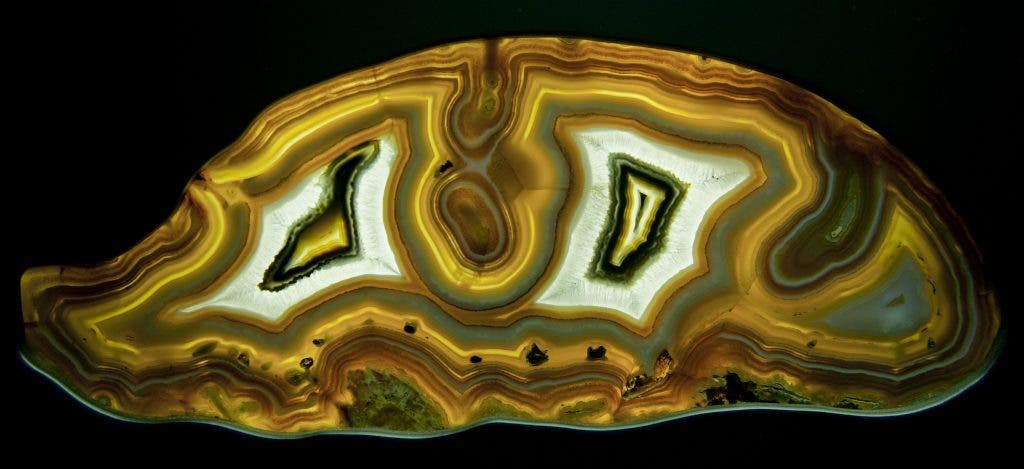
Carnelian

Heliotrope (bloodstone)
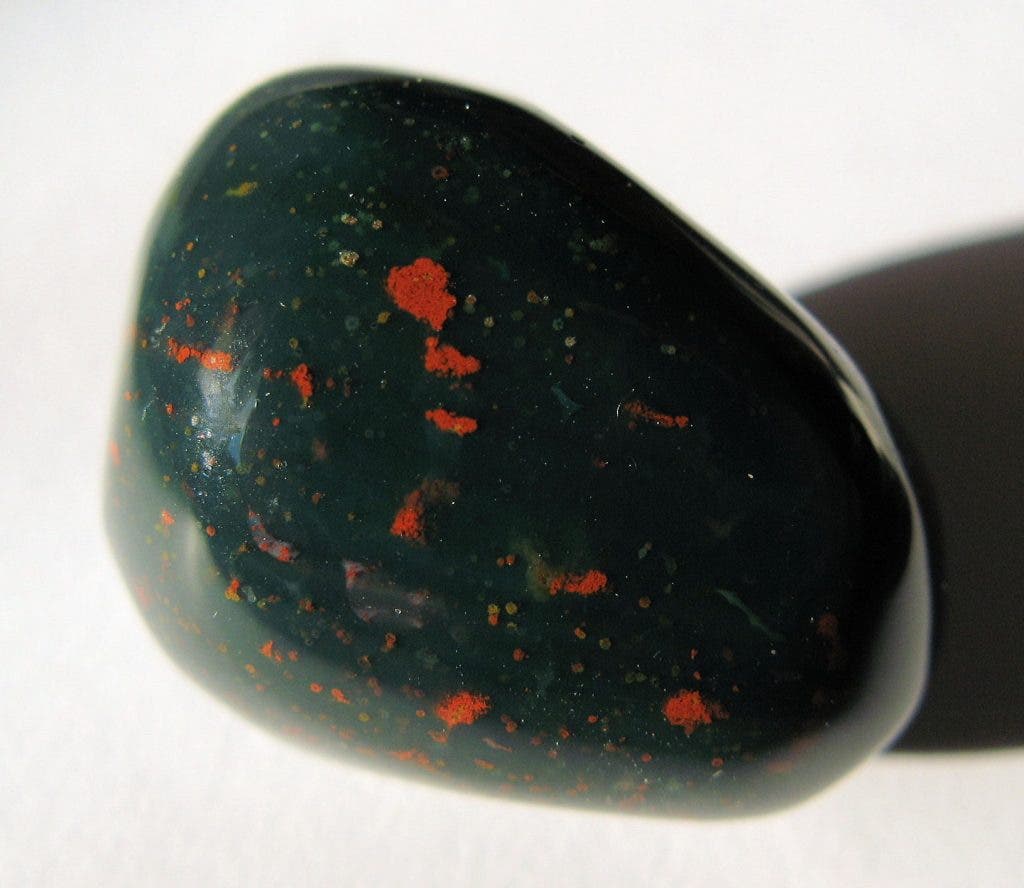
So, there you have it — although these varieties are all in the “quartz” family, they look very different!
You have to bear in mind that this is merely a visual separation of the types of quartz and I’ll ask you to excuse me for not using geological criteria that are more relevant — my goal was to show how unbelievably variate a single mineral can be, and raise interest for this matter. If I succeeded (or not) or you want to add something, please contact me.






